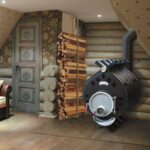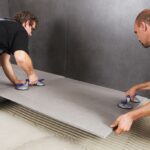Which roofing covering is best for a home? What to consider when choosing. For and against, and installation features of popular roofing materials.
The performance characteristics of the entire house – sound insulation, energy efficiency, fire safety, environmental friendliness, and durability – partially depend on the roofing material. But when choosing it, you need to take into account not only the desired effect but also the following aspects:
- The load exerted on the rafter system The roof, together with a layer of snow or under the influence of wind, should not exert excessive pressure on the structure beneath it.
- Roof configuration Not every roofing covering is suitable for complex-shaped structures with rounded, multifaceted elements. Also, when choosing a material, take into account the angle of inclination of the rafter system.
- Operational characteristics The service life of the coating, the frequency of repairs, and care and maintenance measures depend on the mechanical and corrosion resistance.
- Appearance The roof must match the style of the building and look harmonious not only with the private house itself but also with other buildings on the site.
Other selection criteria include price, insulating properties, and complexity of installation. Let’s consider popular roofing options, and their advantages and disadvantages:
Metal tiles
It is a cold-rolled sheet 0.4-0.5 mm thick with an imitation of traditional tiles. Galvanized for corrosion resistance. The double-sided polymer coating acts as a protective and decorative layer. Traditionally, in private construction, a material with a polyester polymer coating with a thickness of 25-30 microns is used. Can be glossy or matte.
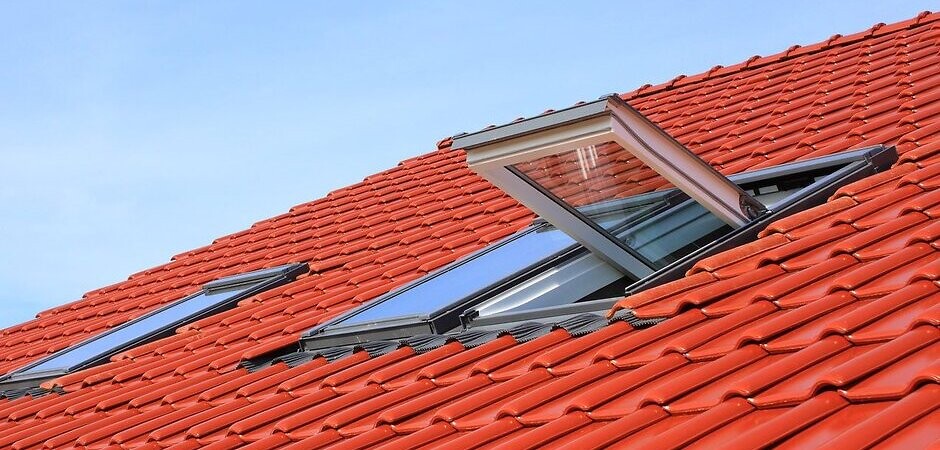
This is a light roof, weighing 3-5 kg per 1 sq. m. Thanks to its lightweight design using self-tapping screws with rubber gaskets, the material can be laid directly on the old roof. Metal tiles are placed on the rafter system at an angle of at least 12°. This is a sheet material with easy installation. It cannot be used on a roof with a complex configuration.
Advantages of metal tiles
- lightweight;
- the ability to lay it yourself, without an assistant;
- high strength to mechanical loads and impacts;
- availability; quick installation;
- large selection of colors.
The disadvantages of metal tiles
- noisy design;
- a lot of waste during installation;
- service life up to 10-15 years.
Roofing corrugated sheets
The material is similar to metal tiles. These are also cold-rolled galvanized sheets, but only in a corrugated configuration. Installed on the roof at an angle of 12°. With a slight inclination, the joints between the sheets are sealed. The material is attached using self-tapping screws with spacers to the rafter system or directly to the old roof.
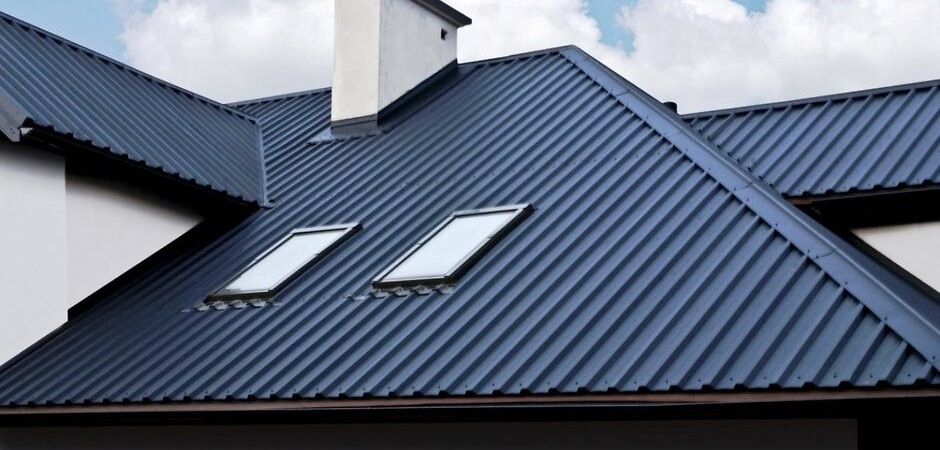
For roofs, sheets of grades C10, C18, C21, C44, H57-70, HC44, H57-900 are used. The first of them is mainly used as an aesthetic covering, while the latter are more functional and are used as an independent roofing material. Externally, this roofing option is not as attractive as metal tiles, but it is cheaper. In residential buildings, it is used mainly for economy.
Advantages of corrugated sheets
- simple installation;
- efficiency;
- lightweight;
- strength;
- large selection of colors.
Disadvantages of corrugated sheets
- low sound insulation;
- low aesthetic qualities;
- short service life of up to 15 years.
Ondulin coating
Inexpensive, environmentally friendly material of fibrous structure with bitumen impregnation. This is a modern alternative to traditional slate. Due to the heat-resistant polymer painting, it looks much more attractive than ordinary slate sheets. The weight of a square meter of material is 3.2-3.3 kg.
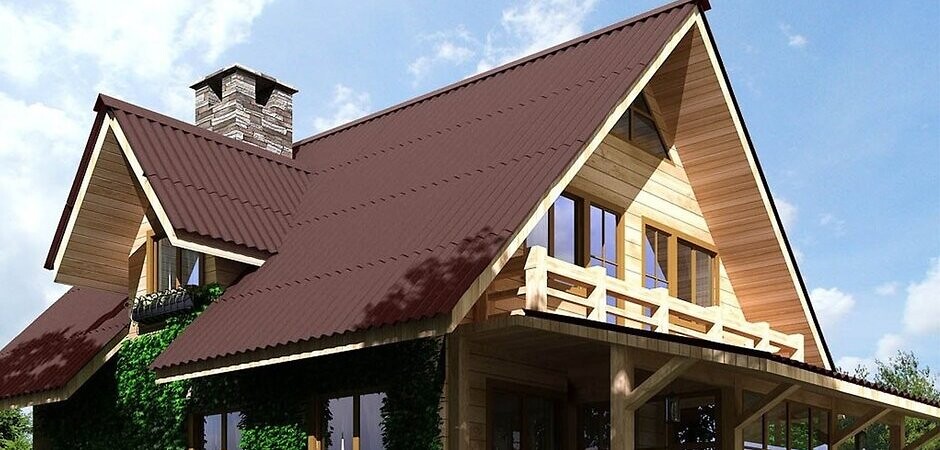
The sheets are placed on the roofing system at an angle of 6°. Depending on the angle, a continuous sheathing or structure is assembled in increments of 45 to 60 cm. The material is mounted on special nails.
Advantages of ondulin roofing
- lightweight;
- ease of installation;
- environmental friendliness, hygiene;
- weather resistance;
- availability;
- variety of colors;
- noiselessness; ease of processing.
Disadvantages of ondulin roofing
- budget appearance;
- fading of paint in the sun;
- moss growth due to dampness;
- service life maximum 20 years;
- low flammability threshold.
Soft bitumen shingles
Flexible self-adhesive roofing made of fiberglass impregnated with bitumen. Stone chips are applied to the outer part, providing protective and aesthetic properties. Mounted on a continuous, moisture-resistant sheathing at an angle of at least 11°. If the slope is small, it is recommended to lay additional waterproofing from a roll covering.
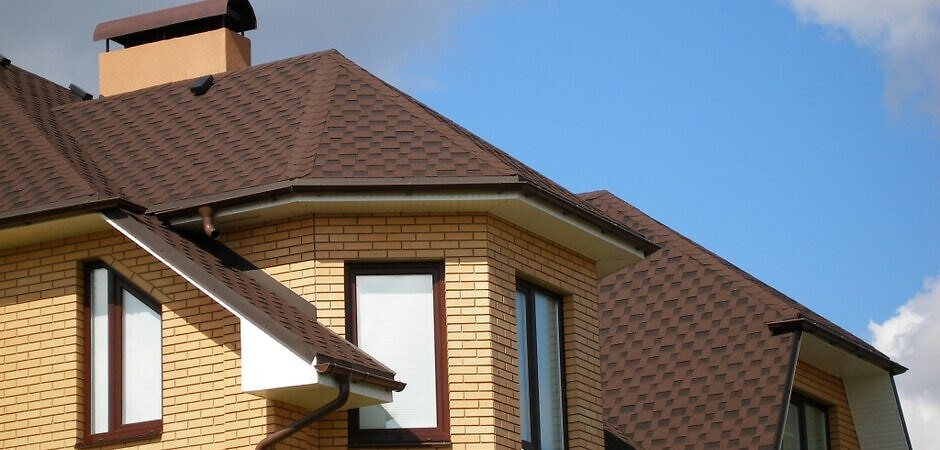
A presentable roof made of bitumen tiles is suitable for installation on roofs of complex shapes and looks good on houses with attics. It practically imitates traditional tile covering.
Advantages of flexible bitumen shingles
- lightweight;
- simple installation;
- aesthetics;
- flexibility;
- noiselessness;
- weather resistance;
- high performance;
- durability;
- availability.
Disadvantages of flexible bitumen shingles
- the need for strict adherence to installation technology;
- flammability;
- deterioration of performance in severe frost.
Ceramic tiles
Traditional roofing material in the form of fired clay tiles. This type of coating is suitable for stone and brick houses with solid supporting structures and a durable rafter system. It belongs to the coatings of the high price segment and is distinguished by good performance and attractive appearance.
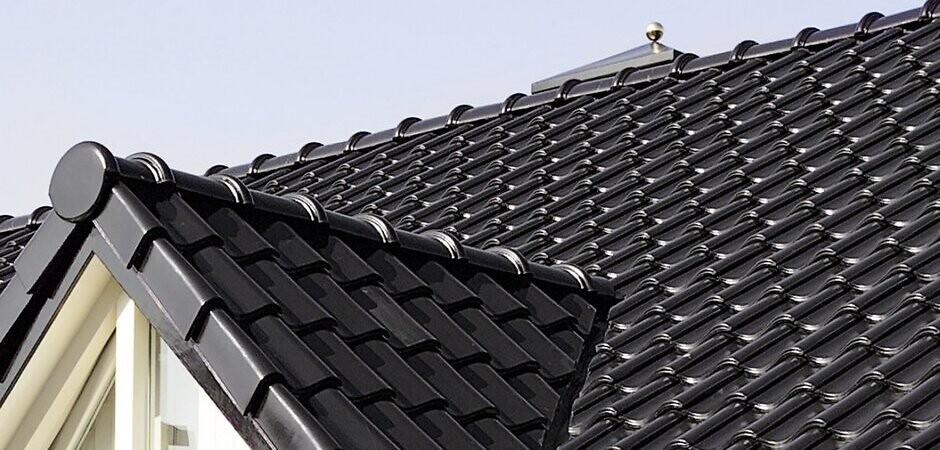
The optimal angle of inclination of the rafter system for installing ceramic tiles is from 25° to 60°. Laying is done by overlapping with the elements fastened to each other using locks. Screws and nails are used for fixation.
Advantages of ceramic tiles
- spectacular appearance;
- service life up to 150 years without repair;
- wide variety of designs;
- resistance to weathering and temperature changes;
- high sound insulation;
- low thermal conductivity;
- fire resistance;
- Suitable for structures of complex shapes.
Disadvantages of ceramic tiles
- price;
- weight per square meter of coating is 40-50 kg;
- fragility;
- complexity of installation.
Concrete tiles
An alternative to traditional clay tiles, made under high pressure from sand and cement. A more affordable option, but still from a high price segment. The material is slightly lighter than ceramic, but also less strong and durable. In appearance and installation technology, it is almost the same as ceramics.
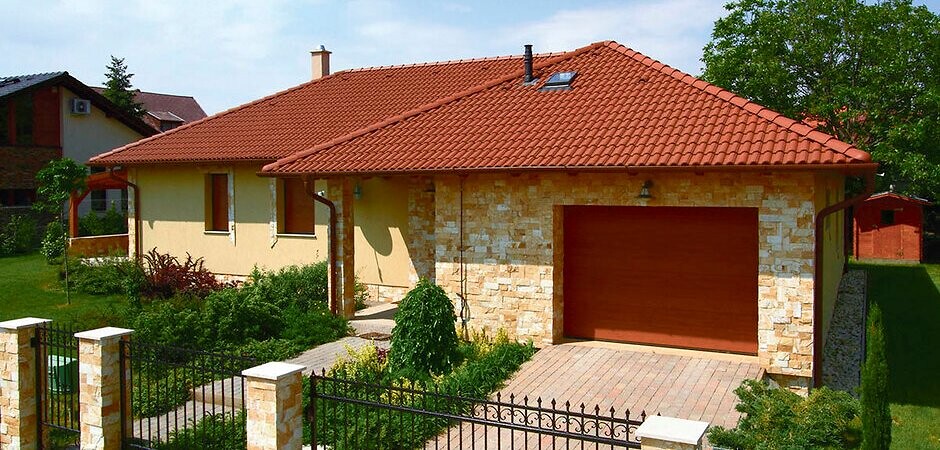
A durable rafter system is installed under the roof from elements with a cross-section of 5×15 cm in increments of 0.6 to 0.9 m. A continuous sheathing with a layer of waterproofing is laid. The design should be at an angle from 20° to 60°.
Advantages of concrete tiles
- service life up to 100 years;
- good sound and heat insulation;
- presentable appearance;
- weather resistance;
- fire resistance;
- Suitable for roofs of various configurations and shapes.
Disadvantages of concrete tiles
- weight 35-40 kg per 1 sq.m;
- price;
- complexity of installation.
Taking into account the physical properties, basic performance characteristics, installation features, and price of each type of material, you will be able to choose the most profitable and practical roofing option.

